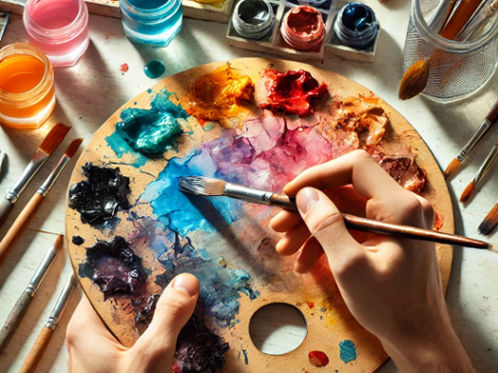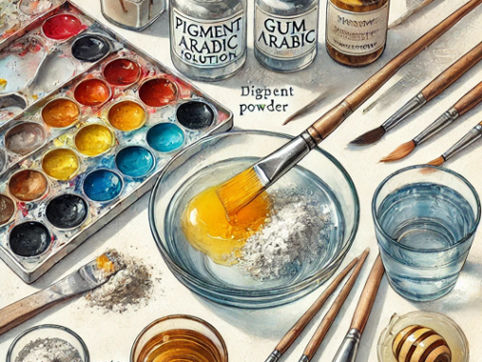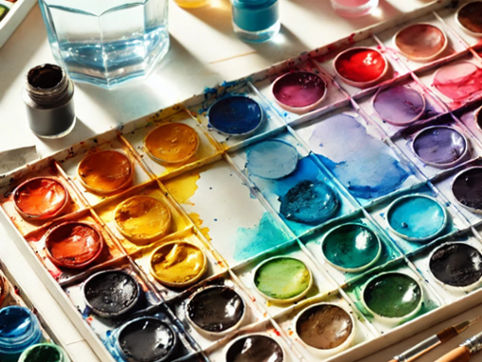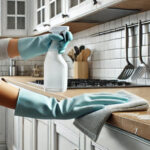Are you wondering how to make watercolor paint at home? Have you ever thought about making your own at home? Crafting your own watercolor paint is cost-effective and a fun and creative project. Plus, it allows you to customize the colours and textures to suit your unique artistic style. In this guide, I’ll walk you through the step-by-step process to help you make watercolor paint easily and effectively.
Why Make Your Watercolor Paint?
Before we dive into the instructions, let’s explore why creating your watercolor paint is worth considering:
- Cost-saving: Making your paint will be cheaper in the long run.
- Customization: You can make unique colours and control the intensity to your preference.
- Eco-friendly: Use non-toxic and natural ingredients for a safer painting experience.
- Fun and Creative: The process is therapeutic and enjoyable.
Understanding Watercolor Paint Components

If you want to learn how to make watercolor paint that works well and lasts, it’s essential to understand its primary components:
1. Pigments
The pigments are responsible for giving the paint its color. Pigments can be natural, synthetic, or organic compounds. Natural pigments such as ground minerals or even plant dyes are ideal for DIY purposes.
2. Binder (Gum Arabic)
The binder enables the pigment to adhere to the painting surface. Gum Arabic, which comes from the acacia tree, is the most common binder used for watercolor paint.
3. Additives (Honey or Glycerin)
These additives provide texture and pliability to the paint, allowing it to flow smoothly on paper.
4. Solvent (Water)
Distilled water serves as the solvent to dissolve the binder and achieve the desired paint consistency.
Materials You Need
To get started on how to make watercolor paint, here are the materials you will need:
- Pigment powder: Found at craft stores or online.
- Gum Arabic: A natural binder that makes the pigment adhere to paper.
- Distilled water: To get a smooth consistency.
- Honey or glycerin: For smoothness and flexibility in paint.
- Mixing palette or glass plate: Mix the ingredients.
- Palette knife or spatula: To mix.
- Small containers: To store the paint.
Optional Add-ons
- Essential oils (like clove oil) to prevent mold.
- Natural pigments (like beetroot or turmeric for DIY color options).
- Binder alternatives: Explore other binders like PVA glue for an experimental approach.
Step-by-Step Guide on How to Make Watercolor Paint
Step 1: Prepare Your Workspace
Choose a clean, flat surface with all the materials within easy reach. Wear an apron and gloves to keep your clothes and hands from getting stained.
Step 2: Measure the Gum Arabic
Take about 1 tablespoon of gum Arabic and mix it with 2 tablespoons of distilled water in a mixing bowl. Stir well until the gum Arabic is completely dissolved.
Tip: You can warm the water slightly to make dissolving easier.
Step 3: Add Honey or Glycerin
Add 1/4 teaspoon of honey or glycerin to the mixture. This will make your paint smoother and easier to apply.
Step 4: Mix the Pigment
Sprinkle 1 teaspoon of your chosen pigment powder onto the mixing palette. Slowly pour in the gum Arabic mixture and begin mixing with a palette knife.
Pro Tip: Use small amounts of pigment at first. If necessary, you can always add more.
Step 5: Achieve the Right Consistency
Keep mixing until the paint has a smooth, thick consistency like toothpaste. Should the mixture be overly dry, incorporate a few drops of distilled water.
Step 6: Test the Paint
Apply a small quantity of the paint on watercolor paper to observe how it flows and dries. Experiment with adjusting the mixture by adding water or pigment accordingly.
Step 7: Store the Paint
Portion out the paint into small airtight containers. Mark each container with the color name for easy recognition.
Important: If you’re using natural pigments, store the paints in the refrigerator to extend their shelf life.
Expert Tips on How to Make Watercolor Paint That Lasts
- Pigment Grinding: When using natural pigments, make sure they are finely ground for improved colour dispersion.
- Ratio Mastery: Ensure the right binder-to-pigment ratio for rich, long-lasting paints.
- Color Blending: Play around with blending pigments to achieve unique colours.
- Testimony: Always test your paints on various paper types to learn about their behavior.
Natural Pigment Ideas
- Turmeric: Bright yellow
- Beetroot powder: Stunning pink
- Charcoal powder: Deep black
- Spinach leaves: Soft green
Creative Ideas for Using DIY Watercolor Paints

- Personalized Greeting Cards: Hand-paint cards for birthdays and celebrations.
- DIY Wall Art: Create unique paintings to adorn your walls.
- Gift Wrapping: Use painted paper to wrap presents for a personalized touch.
Troubleshooting Common Issues
1. Paint Too Thick
Solution: Add a few drops of distilled water and mix thoroughly.
2. Paint Not Adhering to Paper
Solution: Increase the amount of gum Arabic for better binding.
3. Colour Fading After Drying
Solution: Ensure you are using high-quality pigments.
4. Mould Formation
Solution: Add a drop of clove oil to prevent mould.
Visual Enhancements to Engage Readers
- Include Step-by-Step Photos: Capture images of each step for better visual guidance.
- Infographics: Summarize the process visually for quick understanding.
- Video Tutorial: Embed a demonstration video to keep readers engaged longer.
Anecdote: My First DIY Watercolor Paint Adventure
I remember the first time I made my own watercolor paint. It was a rainy Sunday afternoon, and I was feeling adventurous. I decided to use turmeric for a bright yellow hue. The result was surprisingly vibrant, and I felt a deep sense of accomplishment. Plus, every time I use that paint, it reminds me of that cozy afternoon filled with creativity.
FAQs to Clear Common Doubts
1. Can I use food coloring instead of pigment powder?
Yes, but the colours may not be as vibrant or long-lasting as traditional pigments.
2. How long does homemade watercolor paint last?
If stored in closed containers, it can last a few months. Adding a drop of clove oil can prevent mould.
3. Is gum Arabic necessary?
Yes, gum Arabic is a binder that makes the pigment adhere to the paper. Without this, the paint may not be as effective.
4. Can I use natural pigments?
Yes, you can experiment with using turmeric, beetroot powder, and even crushed flowers for natural shades.
5. What paper is best for DIY watercolor paints?
Look for heavy, textured watercolor paper that absorbs paint well.
Final Thoughts
Now that you know how to make watercolor paint, it’s time to get creative. By following this simple guide, you can craft beautiful, vibrant paints tailored to your unique style. Add creative touches to your artwork, impress your friends, and enjoy the satisfaction of using paints you’ve made yourself.
Ready to explore your artistic side? Grab those ingredients and start creating your masterpiece today!


